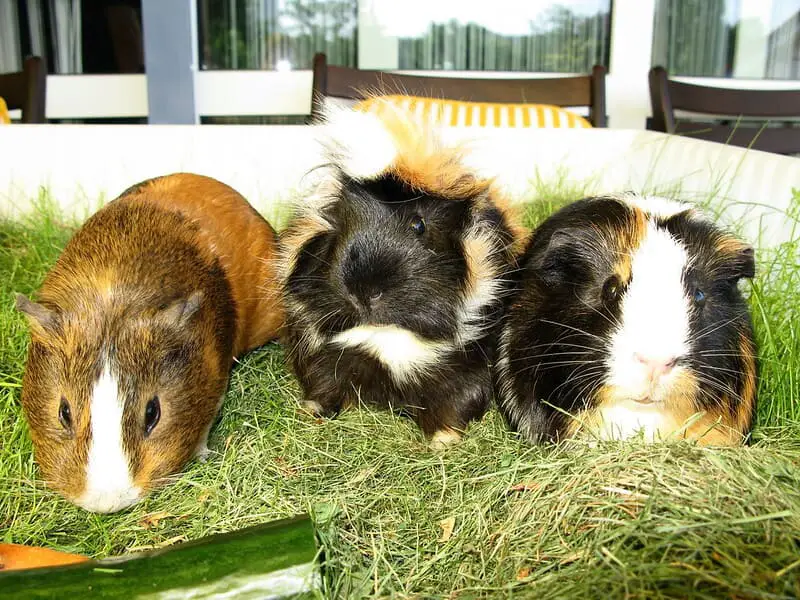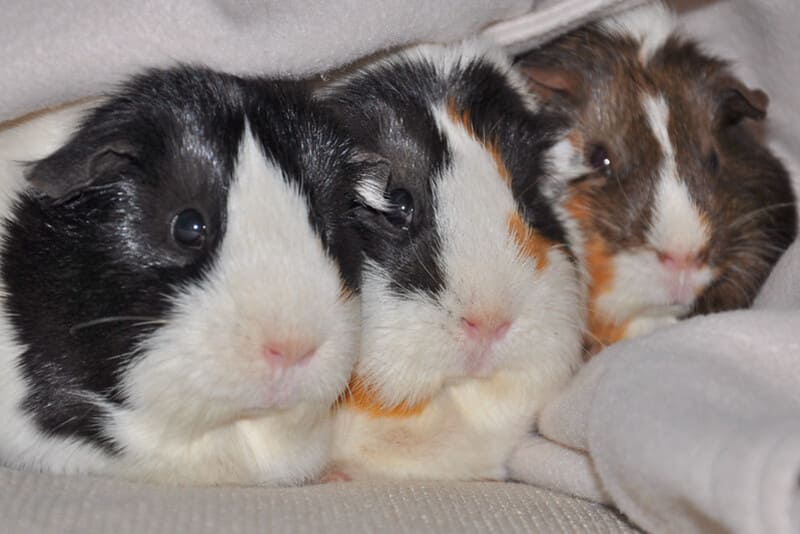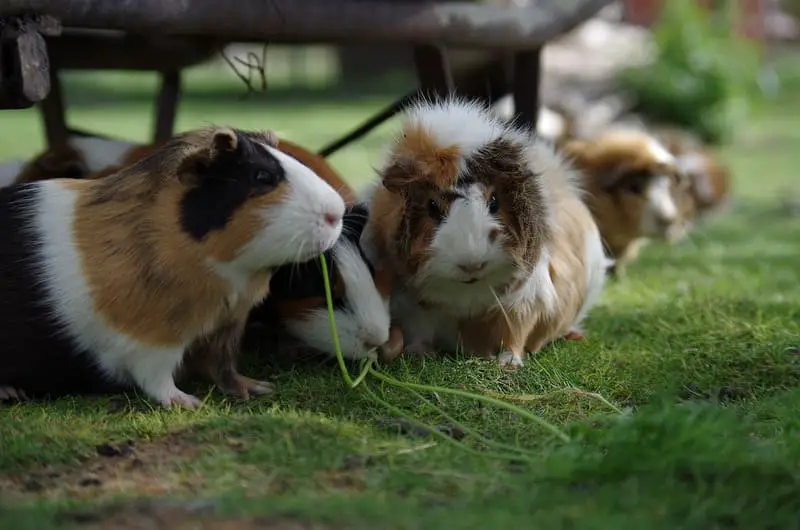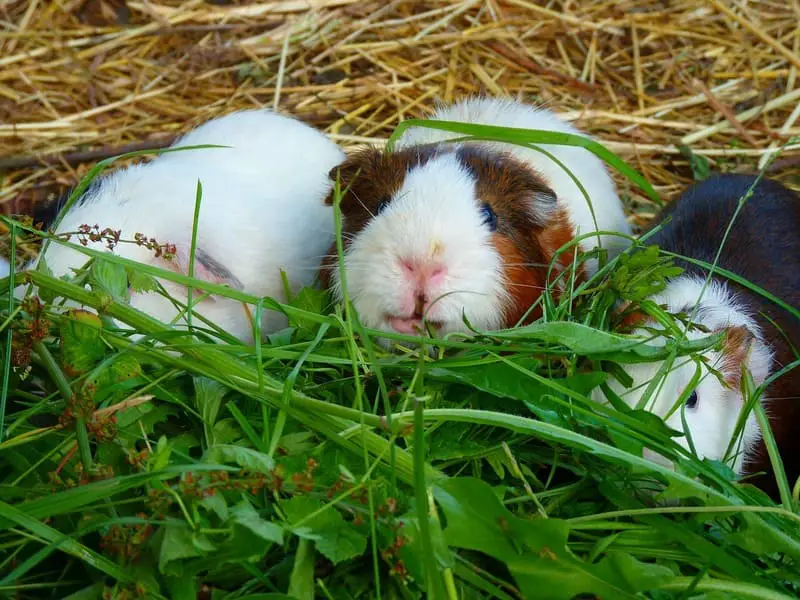Guinea pigs, also known as cavies, are endearing and gentle rodents that have become beloved pets in households around the world. These small creatures are known for their charming personalities, distinctive vocalizations, and, most notably, their need for companionship. While guinea pigs can be kept alone, it is widely recognized that they thrive when they have a friend or companion of their own kind. In this comprehensive guide, we will explore the social behavior of guinea pigs, the benefits of companionship, how to introduce guinea pigs to one another, and what to do if you decide to keep a single guinea pig.

The Social Nature of Guinea Pigs
Guinea pigs are inherently social animals that form strong bonds with their fellow cavies. Their social nature is ingrained in their biology and behavior. Understanding the social tendencies of guinea pigs is essential for providing them with a fulfilling and enriched life as pets.
Why Guinea Pigs Need Companions
The question of whether guinea pigs need companions is one that often arises when considering pet ownership. To address this, it’s important to delve into the numerous reasons why guinea pigs benefit from the company of their own kind.
1. Natural Herd Animals
In the wild, guinea pigs are social and live in groups or herds. They rely on one another for protection, warmth, and emotional support. This social structure is deeply rooted in their evolutionary history, and they have carried this need for companionship into domestication.
2. Emotional Well-Being
Guinea pigs experience a wide range of emotions, including happiness, affection, and even loneliness. A solitary guinea pig can become bored, stressed, or depressed due to the absence of social interaction and play.
3. Communication
Guinea pigs are highly communicative animals, and they use a variety of vocalizations and body language to express themselves. When they have companions, they engage in these behaviors more frequently, which is not only fascinating to observe but also helps maintain their social and emotional health.
4. Play and Exercise
Guinea pigs are playful creatures that enjoy activities such as chasing, popcorning (a joyful leaping behavior), and exploring. When they have a companion, they engage in these activities together, providing mental and physical stimulation.
5. Mutual Grooming
Guinea pigs groom one another as a sign of affection and bonding. Mutual grooming strengthens their social connections and contributes to their overall well-being.
6. Stress Reduction
Companionship reduces stress in guinea pigs, making them more relaxed and confident. They have a sense of security and comfort when they are not alone.
7. Learning from One Another
Companion guinea pigs learn from each other, whether it’s about their environment, foraging, or even vocalizations. Having a fellow guinea pig as a role model can be beneficial, especially for younger animals.
8. Coping with Life Changes
Guinea pigs may face changes and challenges in their lives, such as the loss of a companion or a new environment. Having a fellow guinea pig can offer emotional support during these times.

Signs of a Lonely Guinea Pig
Recognizing the signs of loneliness in a guinea pig is essential for providing the appropriate care and companionship. A lonely guinea pig may exhibit various behaviors and physical signs:
1. Increased Vocalizations
Lonely guinea pigs may become more vocal, producing more frequent whining or squeaking sounds to express their distress.
2. Overeating or Undereating
Changes in eating habits, such as overeating or undereating, can be a sign of emotional distress in guinea pigs.
3. Excessive Grooming or Barbering
A lonely guinea pig may excessively groom itself or even exhibit barbering behavior, where it trims its own or its companion’s fur to cope with stress.
4. Lethargy
Lonely guinea pigs may become lethargic, appearing less active and engaged in their environment.
5. Hiding
A solitary guinea pig may seek solitude and hide more frequently, showing signs of anxiety or depression.
6. Weight Loss
Prolonged loneliness can lead to weight loss due to decreased appetite and stress.
7. Aggressive Behavior
Lonely guinea pigs may become more aggressive or territorial. They may exhibit behaviors like nipping or chasing other guinea pigs when introduced.
8. Self-Harm
In severe cases of loneliness, guinea pigs may resort to self-harm, such as excessive biting of their own fur or even their bodies.
The Benefits of Companionship for Guinea Pigs
Having a companion is highly beneficial for guinea pigs, and the advantages of companionship extend to various aspects of their lives:
1. Emotional Well-Being
Companionship provides guinea pigs with emotional support, reducing stress and promoting overall happiness. They engage in social activities that strengthen their bonds and provide a sense of security.
2. Exercise and Play
Guinea pigs with companions tend to engage in more play and exercise, which is essential for their physical and mental health. Playful behavior, such as popcorning and running around, is more frequent in the company of a friend.
3. Learning Opportunities
Companion guinea pigs learn from one another and can adapt to changes more easily. Young guinea pigs often mimic the behaviors of older companions, facilitating their learning and development.
4. Mutual Grooming
Companion guinea pigs engage in mutual grooming, reinforcing their bonds and ensuring they are clean and well-groomed.
5. Improved Communication
Guinea pigs with companions engage in more vocalizations and nonverbal communication, making their interactions more interesting and complex. Observing their communication can be a source of joy for their human caregivers.
6. Reduced Loneliness
Companionship alleviates loneliness and provides guinea pigs with a companion to cuddle with and share warmth, especially during colder months.
7. Coping with Life Changes
Having a companion helps guinea pigs cope with life changes, such as the loss of a companion, moving to a new environment, or other challenging situations.

The Different Types of Guinea Pig Companionship
When it comes to providing companionship for your guinea pig, there are different options to consider:
1. Same-Gender Pairing
Pairing two guinea pigs of the same gender is a common and successful method for providing companionship. It’s important to pair guinea pigs that are compatible in terms of age, size, and temperament. A same-gender pair can form a strong bond and provide each other with the benefits of companionship.
2. Mixed-Gender Pairing
Mixed-gender pairings can be successful but come with specific considerations. It’s crucial to spay or neuter one or both of the guinea pigs to prevent unwanted pregnancies. Mixed-gender pairs can develop strong bonds and provide companionship, but they require careful management to prevent breeding.
3. Mixed-Age Pairing
Pairing guinea pigs of different ages, such as a younger guinea pig with an older companion, can be successful. Younger guinea pigs often learn from their older counterparts, and the bond can be enriching for both animals. However, it’s essential to consider the compatibility of their personalities and preferences.
4. Group Living
Some guinea pig enthusiasts choose to keep more than two guinea pigs together, forming a small group or herd. Group living can provide a highly enriched social environment for guinea pigs, but it requires careful monitoring of social dynamics and the provision of adequate space and resources.
Introducing Guinea Pigs to One Another
Introducing guinea pigs to one another requires a gradual and well-managed process to ensure their safety and a successful bond. Here are the steps to introduce guinea pigs to one another:
1. Quarantine Period
Before introducing a new guinea pig to your existing one, it’s essential to observe a quarantine period. Keep the new guinea pig in a separate space for at least two weeks to monitor their health and ensure they are free of contagious diseases.
2. Neutral Territory
When you decide to introduce guinea pigs, choose a neutral and unfamiliar territory. This can be a clean and spacious playpen or a section of the floor that neither guinea pig has claimed as their territory.
3. Supervised Interaction
Place both guinea pigs in the neutral territory while closely supervising their interaction. Be prepared to intervene if aggressive behavior occurs. It’s normal for guinea pigs to establish a hierarchy through mild chattering or gentle nudging, but serious fights should be prevented.
4. Short, Positive Sessions
Start with short and positive interaction sessions, gradually increasing their duration over several days. Observe their behavior closely and ensure they exhibit signs of bonding, such as mutual grooming and vocalizations.
5. Return to Separate Housing
After each interaction session, return the guinea pigs to their separate enclosures. Keep them apart during the night and when you are not available to supervise.
6. Gradual Integration
Over time, you can gradually integrate the guinea pigs into a shared enclosure, provided their interactions remain positive. Ensure there are multiple hiding spots, food dishes, and water bottles to prevent resource guarding.
7. Monitor Social Dynamics
Continue to monitor the social dynamics of your guinea pigs. Be attentive to any signs of aggression or distress, and be prepared to separate them if necessary. Occasionally, guinea pigs may need temporary separation due to conflicts.

Caring for a Single Guinea Pig
While it is highly recommended to provide guinea pigs with companionship, there are situations where keeping a single guinea pig may be necessary or preferred. If you choose to care for a single guinea pig, there are steps you can take to ensure they receive adequate social interaction and stimulation:
1. Human Companionship
Spend quality time with your guinea pig each day. Engage in gentle petting, grooming, and talking to them. Your presence and interaction are essential for their social well-being.
2. Toys and Enrichment
Provide toys and enrichment activities to keep your guinea pig mentally and physically engaged. Guinea pigs enjoy toys they can chew on, tunnels to explore, and puzzle feeders that dispense treats.
3. Mirror
Place a small, unbreakable mirror in your guinea pig’s enclosure. This can give them the illusion of having a companion and provide a source of visual stimulation.
4. Consider Adoption
If you have a single guinea pig and wish to provide them with companionship, consider adopting another guinea pig from a reputable rescue organization. Be sure to follow the proper introduction and quarantine procedures when bringing a new guinea pig into your home.
5. Interaction with Other Pets
If you have other pets, such as well-behaved and gentle dogs or cats, supervised interactions with your guinea pig can offer social stimulation. Ensure that these interactions are safe and free of stress for your guinea pig.
Caring for a Lonely Guinea Pig: Special Considerations
Caring for a single guinea pig requires special attention to ensure they lead happy and fulfilling lives. Here are some additional considerations for the well-being of a lonely guinea pig:
1. Housing Size
Provide your single guinea pig with an adequately spacious enclosure. Guinea pigs need room to move, play, and explore, even if they do not have a companion. A larger enclosure can help mitigate the effects of loneliness.
2. Daily Interaction
Devote time each day to interact with your guinea pig. This can include gentle handling, petting, and talking to them. Your guinea pig will appreciate the social attention.
3. Enrichment
Offer a variety of enrichment items to keep your guinea pig mentally and physically engaged. Toys, tunnels, and puzzle feeders can provide stimulation and prevent boredom.
4. Routine and Consistency
Maintain a consistent daily routine for your guinea pig. Regular feeding times, playtime, and interaction can help provide structure and security.
5. Consider Adoption
If you have a single guinea pig and wish to provide them with companionship, consider adopting another guinea pig from a reputable rescue organization. Follow the proper introduction and quarantine procedures to ensure a successful bond.
6. Veterinary Care
Regular veterinary check-ups are crucial for all guinea pigs, but they are especially important for those without companions. A veterinarian can help monitor their health and address any signs of loneliness or stress.
Conclusion
Guinea pigs are naturally social animals that thrive when they have companions of their own kind. Companionship provides them with emotional well-being, play, exercise, learning opportunities, and a sense of security. It also reduces loneliness and helps them cope with life changes. The benefits of companionship extend to their overall health and happiness.
When introducing guinea pigs to one another, follow a gradual and well-managed process to ensure their safety and a successful bond. Should you decide to care for a single guinea pig, it is essential to provide them with human companionship, toys, and mental and physical stimulation.
Ultimately, the well-being of guinea pigs is enriched when they have the opportunity to form bonds with their fellow cavies. Guinea pigs are more content, active, and expressive when they are not alone. By understanding and meeting their social needs, you can ensure that your guinea pig leads a joyful and fulfilling life as a cherished pet.